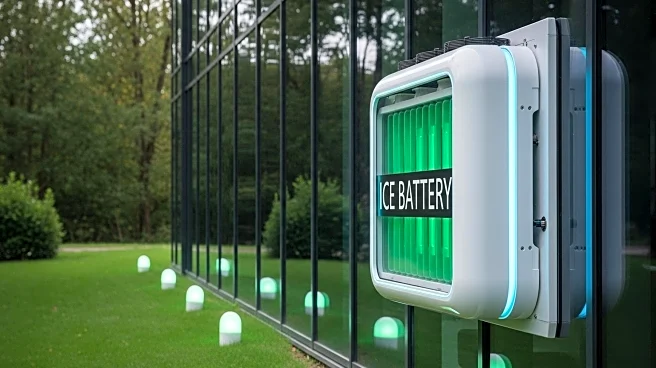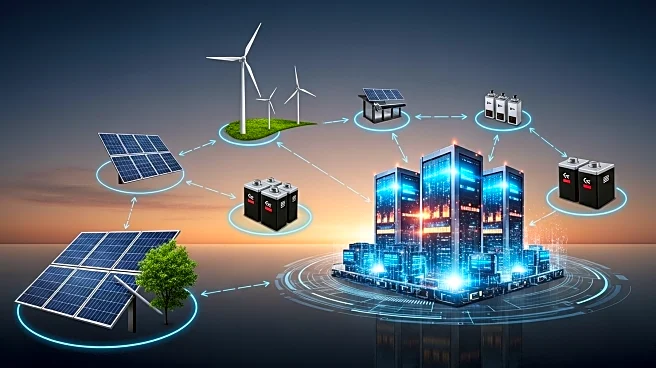What's Happening?
Buildings across the U.S. are increasingly adopting 'ice batteries' as a sustainable solution for air conditioning. This technology involves freezing water into ice at night when electricity is cheaper and using it to cool buildings during the day. The Norton Audubon Hospital in Louisville, Kentucky, is one such facility utilizing this system, which has significantly reduced its energy costs. Ice batteries are gaining popularity in various sectors, including schools, commercial buildings, and data centers, due to their ability to lower electricity usage and reduce strain on the power grid.
Why It's Important?
The adoption of ice batteries represents a significant step towards sustainable energy solutions in the face of rising temperatures and increasing electricity demand. By reducing reliance on traditional air conditioning systems, ice batteries help decrease greenhouse gas emissions and promote energy efficiency. This technology offers a viable alternative for industries with high cooling demands, such as data centers, which are critical to supporting technological advancements like artificial intelligence. The shift towards sustainable cooling solutions also aligns with broader efforts to combat climate change and reduce the environmental impact of energy consumption.
What's Next?
As awareness of ice battery technology grows, more facilities are expected to adopt this sustainable cooling solution. The technology's potential to reduce energy costs and environmental impact makes it an attractive option for various sectors. Continued innovation and investment in ice battery systems could further enhance their efficiency and accessibility, contributing to a more sustainable energy future.
Beyond the Headlines
The implementation of ice batteries highlights the importance of innovative solutions in addressing climate change and energy challenges. As the demand for cooling increases, particularly in urban areas, sustainable technologies like ice batteries will play a crucial role in reducing carbon footprints and promoting environmental stewardship. The success of such initiatives could inspire further advancements in renewable energy and energy storage technologies.












